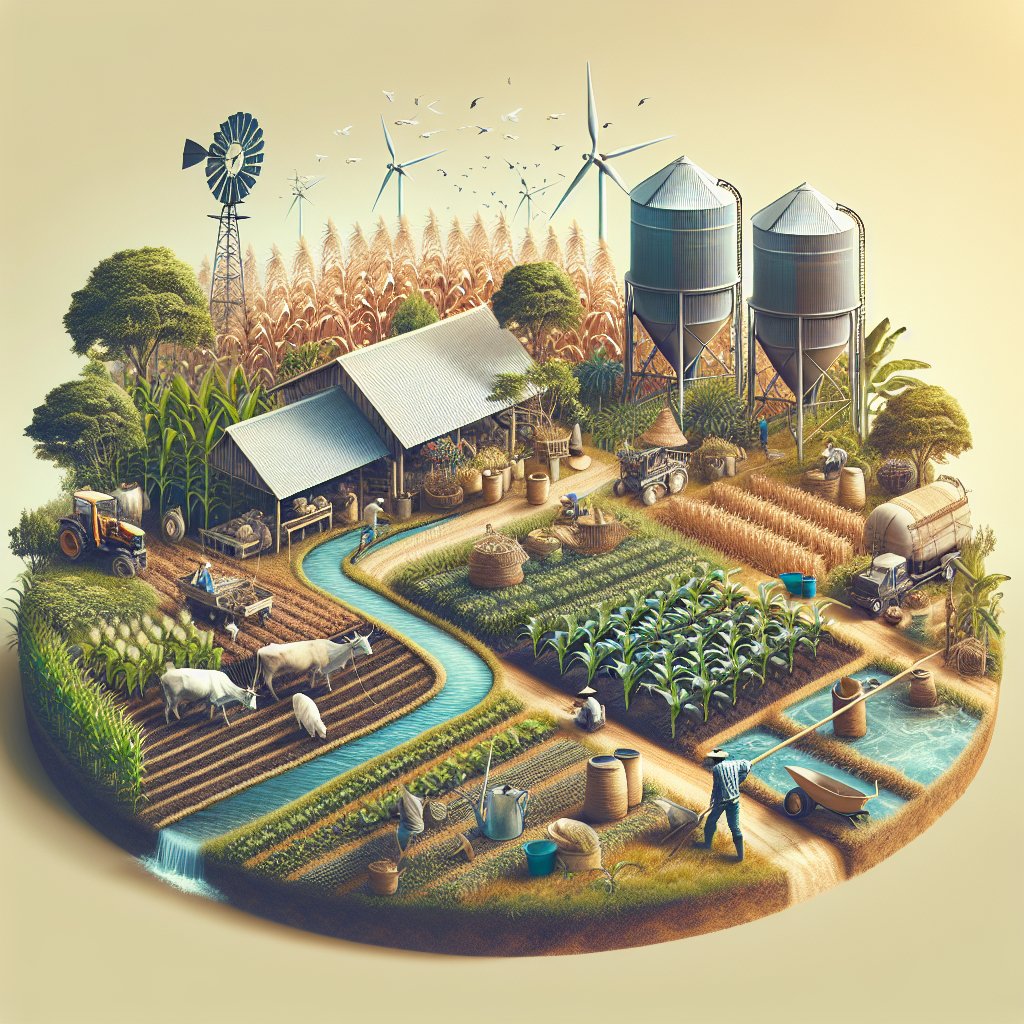
Climate change poses significant challenges to agriculture, necessitating proactive measures to ensure farm sustainability and productivity. As weather patterns become increasingly unpredictable, farmers must adapt their practices to mitigate risks and capitalize on new opportunities. This article explores strategies for preparing your farm for the impacts of climate change, focusing on both immediate actions and long-term planning.
Understanding the Impact of Climate Change on Agriculture
Climate change affects agriculture in numerous ways, from altering precipitation patterns to increasing the frequency of extreme weather events. These changes can lead to reduced crop yields, increased pest and disease pressure, and shifts in growing seasons. Understanding these impacts is crucial for developing effective adaptation strategies.
Changes in Temperature and Precipitation
One of the most direct effects of climate change is the alteration of temperature and precipitation patterns. Warmer temperatures can extend growing seasons in some regions, but they can also lead to heat stress in crops and livestock. Additionally, changes in precipitation can result in droughts or floods, both of which can devastate agricultural production.
To address these challenges, farmers can implement water management practices such as rainwater harvesting, efficient irrigation systems, and soil moisture monitoring. These techniques help optimize water use and ensure crops receive adequate hydration even during dry spells.
Increased Pest and Disease Pressure
As temperatures rise, many pests and diseases thrive, posing a greater threat to crops. Warmer winters may fail to kill off pests, leading to larger populations in the growing season. Additionally, new pests and diseases may migrate to areas where they previously could not survive.
Farmers can combat these threats by adopting integrated pest management (IPM) practices. IPM involves using a combination of biological, cultural, mechanical, and chemical controls to manage pest populations sustainably. Crop rotation, resistant crop varieties, and biological control agents are all components of a robust IPM strategy.
Adapting Farming Practices for Resilience
To build resilience against climate change, farmers must adapt their practices to be more sustainable and flexible. This involves both short-term adjustments and long-term planning to ensure the farm can withstand and recover from climate-related disruptions.
Soil Health and Conservation
Healthy soil is the foundation of a resilient farm. Practices such as cover cropping, reduced tillage, and organic amendments can improve soil structure, increase organic matter, and enhance water retention. These practices not only boost crop productivity but also help sequester carbon, mitigating climate change.
Conservation tillage, for example, minimizes soil disturbance, preserving soil structure and reducing erosion. Cover crops, on the other hand, protect the soil from erosion, suppress weeds, and improve soil fertility. By maintaining healthy soil, farmers can better withstand the impacts of climate change.
Diversification and Crop Selection
Diversifying crops and selecting climate-resilient varieties can reduce the risk of crop failure due to climate change. By growing a variety of crops, farmers can spread risk and ensure that not all crops are affected by a single adverse event. Additionally, selecting crop varieties that are tolerant to heat, drought, or flooding can improve resilience.
Agroforestry, which integrates trees and shrubs into agricultural landscapes, is another diversification strategy. Trees provide shade, reduce wind speed, and improve soil health, creating a more stable microclimate for crops and livestock.
Investing in Technology and Innovation
Technology and innovation play a crucial role in helping farmers adapt to climate change. From precision agriculture to climate-smart technologies, these tools can enhance farm efficiency and resilience.
Precision Agriculture
Precision agriculture involves using technology to monitor and manage field variability in crops. Tools such as GPS, remote sensing, and data analytics allow farmers to apply inputs like water, fertilizers, and pesticides more efficiently. This not only reduces costs but also minimizes environmental impact.
By using precision agriculture, farmers can optimize resource use, improve crop yields, and reduce vulnerability to climate change. For example, variable rate technology (VRT) allows for the precise application of inputs based on soil and crop needs, enhancing productivity and sustainability.
Climate-Smart Technologies
Climate-smart technologies are designed to increase agricultural productivity while reducing greenhouse gas emissions and enhancing resilience. These technologies include drought-resistant seeds, efficient irrigation systems, and renewable energy sources.
Solar-powered irrigation systems, for instance, provide a sustainable water supply without relying on fossil fuels. Similarly, drought-resistant seeds can maintain yields under water-scarce conditions, ensuring food security in the face of climate change.
Building Community and Policy Support
Adapting to climate change requires collaboration among farmers, communities, and policymakers. By working together, stakeholders can develop comprehensive strategies to support agricultural resilience.
Community-Based Approaches
Community-based approaches involve local stakeholders in decision-making processes, ensuring that adaptation strategies are tailored to specific needs and conditions. Farmer cooperatives, for example, can facilitate knowledge sharing and resource pooling, enabling smallholders to access technologies and markets.
Participatory research and extension services can also empower farmers to adopt climate-smart practices. By involving farmers in research, they can contribute local knowledge and test new technologies, ensuring that solutions are practical and effective.
Policy and Institutional Support
Government policies and institutional support are essential for creating an enabling environment for climate adaptation. Policies that promote sustainable agriculture, provide financial incentives, and support research and development can accelerate the adoption of climate-smart practices.
Insurance schemes, for instance, can help farmers manage risk by providing financial protection against climate-related losses. Similarly, subsidies for renewable energy and water-saving technologies can encourage their adoption, reducing the farm’s carbon footprint and enhancing resilience.
In conclusion, preparing your farm for climate change involves a multifaceted approach that combines understanding impacts, adapting practices, leveraging technology, and building community and policy support. By taking proactive measures, farmers can ensure their operations remain sustainable and productive in the face of a changing climate.

